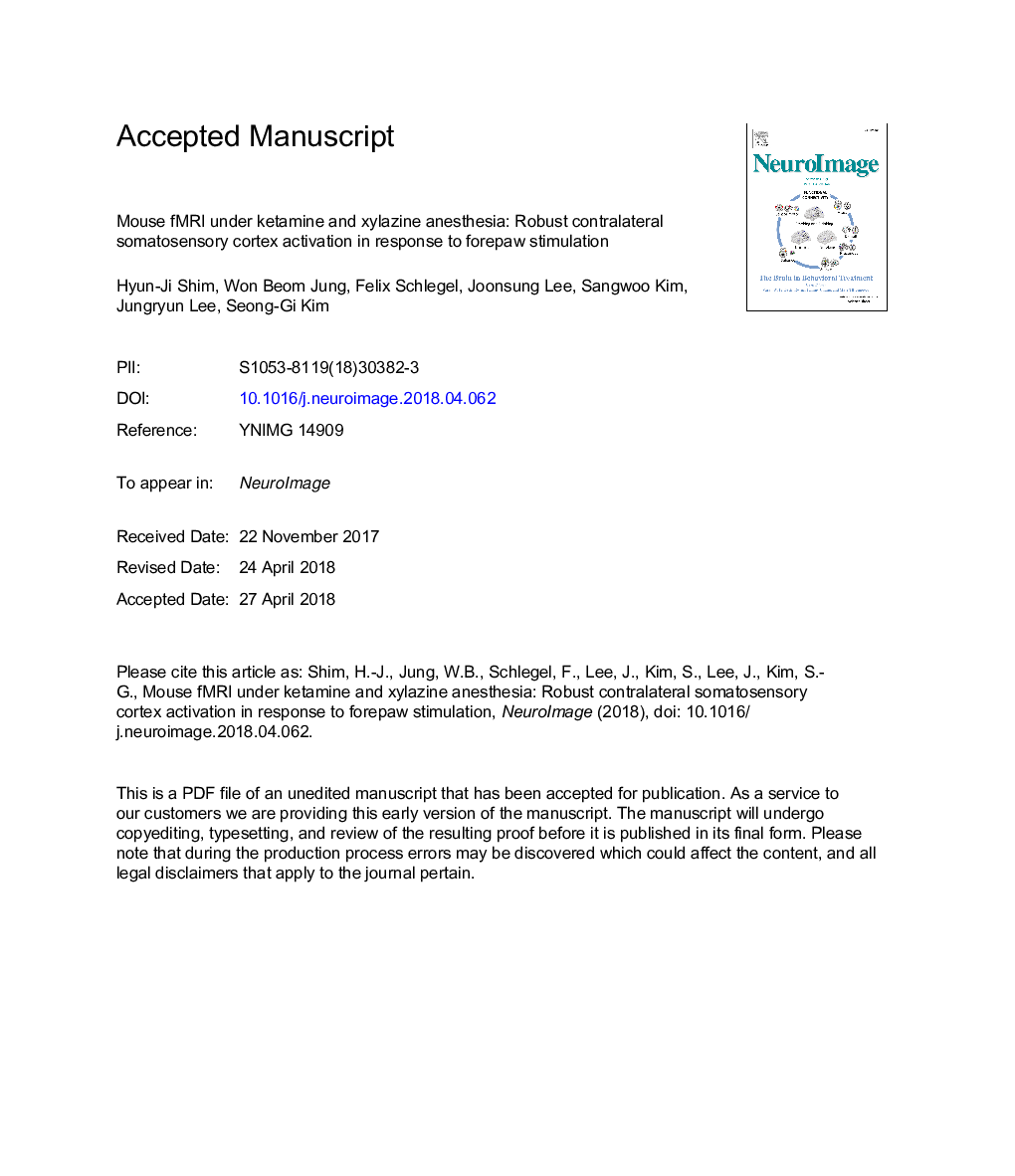| Article ID | Journal | Published Year | Pages | File Type |
|---|---|---|---|---|
| 8686800 | NeuroImage | 2018 | 45 Pages |
Abstract
Mouse fMRI is critically useful to investigate functions of mouse models. Until now, the somatosensory-evoked responses in anesthetized mice are often widespread and inconsistent across reports. Here, we adopted a ketamine and xylazine mixture for mouse fMRI, which is relatively new anesthetics in fMRI experiments. Forepaw stimulation frequency was optimized using cerebral blood volume (CBV)-weighted optical imaging (nâ¯=â¯11) and blood-oxygenation-level dependent (BOLD) fMRI with a gradient-echo time of 16â¯msâ¯at 9.4â¯T, and 4â¯Hz stimulation with 0.5â¯ms and 0.5â¯mA pulses induced the highest hemodynamic response. For 20-s 4-Hz unilateral forepaw stimulation, localized BOLD activity was consistently found in the contralateral primary forelimb somatosensory cortex (S1FL), while no significant change was observed in the ipsilateral S1FL. The mean magnitude was 1.44â¯Â±â¯0.20% SEM (nâ¯=â¯9) in the contralateral S1FL and 0.69â¯Â±â¯0.10% in the contralateral thalamus. The variability of evoked fMRI responses across sessions was investigated by comparing with resting state fMRI (rsfMRI) functional connectivity (FC). Evoked responses in S1FL were correlated positively with rsfMRI FC between bilateral S1FL (râ¯=â¯0.63 to 0.69) and negatively with FC between S1FL and the anterior cingulate cortex (râ¯=â¯â0.50 to â0.57), suggesting that rsfMRI FC is a good index of the evoked fMRI response and anesthetized animal condition. Finally, three weekly fMRI scans were performed in 5 mice, and localized activity was reproducibly observed in S1FL, with a success rate of 70-95%. In summary, our developed fMRI protocol can be used for mapping functions of mouse models.
Related Topics
Life Sciences
Neuroscience
Cognitive Neuroscience
Authors
Hyun-Ji Shim, Won Beom Jung, Felix Schlegel, Joonsung Lee, Sangwoo Kim, Jungryun Lee, Seong-Gi Kim,
